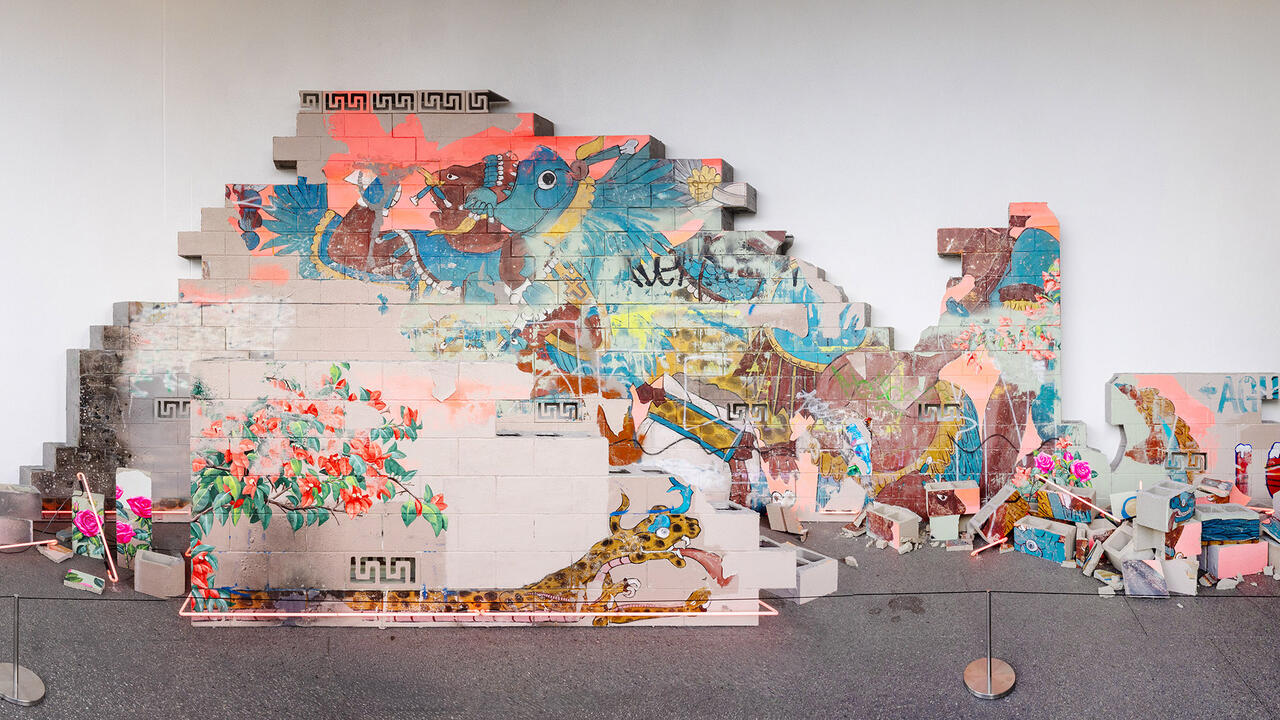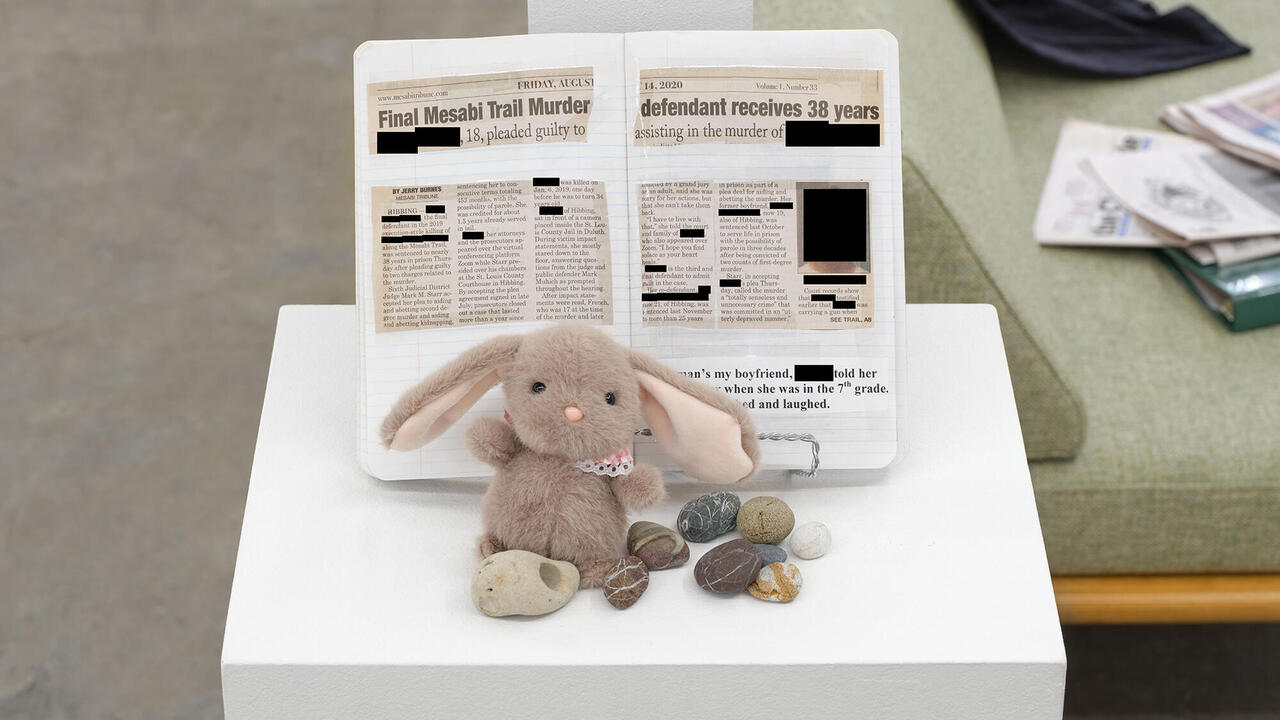Marisa Merz
Hammer Museum, Los Angeles, USA
Hammer Museum, Los Angeles, USA

Framing Marisa Merz as the ‘sole female protagonist’ of Arte Povera – a term coined by Germano Celant in 1967 to describe a group of Italian artists who rejected loftier forms for ‘poor’ materials such as rocks, wood, burlap and industrial remnants – ‘The Sky Is a Great Space’, the artist’s first US retrospective, forefronts her importance within the dominantly male group and broader category of postwar contemporary art. This is a considerable task, further complicated by the artist’s own ongoing attempts to undermine the conventions and methods of art history. Merz, in good avant-garde faith, took issue with fine art’s penchant for the masterpiece, and many of the works in her retrospective are undated and untitled. While this aversion to naming and categorization positions her vast and diverse body of sculptures, drawings, paintings and mixed media works into a relational practice that defies the specificities of medium or periodization, it also takes form in the artist’s blatant refusal to identify herself or her work as feminist. The curators of the exhibition suggest otherwise.

Merz’s sculptural production often incorporates weaving and knitting – activities conventionally tied to women’s work, craft and domestic labour. The chairs, blankets, flower-filled vases and other quotidian objects in her work further signify spaces of domesticity and maternity. So do poignant references to her daughter Beatrice; a work comprised of knitting needles and woven nylon letters spelling out ‘BEA’ finds multiple iterations throughout her life. If these are the forms, subjects and techniques that ostensibly separate her from her male counterparts, they are also what endanger her to a ‘rhetoric of femininity’.
In other words, if Merz’s practice is feminist, its complexities do not translate well to a soundbyte, museum didactic or even an exhibition review. What can be said is that her objects and images are stunning aesthetic forms that conjure the body and bodily. Not merely figurative or abstract representations of bodies, the works seem to invoke the somatic conditions of being a body. In the sheets of lambent aluminium that form her biomorphic mobiles, or Living Sculpture (1966), we encounter alien stamen and floating entrails. Re-envisioned on a two-dimensional surface, the layered masses might articulate the futurist paintings of Filippo Marinetti or Giacomo Balla – a single, blurred body caught in motion.

Merz’s works on paper, with their oscillating, intersecting lines and dynamic compositions, also share affinities with futurist precedents but convey a nuanced movement that speaks to the body’s internal rhythms, the pulse of arteries and nervous systems rather than the speed of technological progression. In one group of drawings, individual frames also entrap pennies and autumn leaves behind their glass panes: currency’s circulation made still, seasonal flux subtly diverted. These are insights into Merz’s singular sense of temporality, which seems not linear or contained but relational and open-ended, defined by personal, material and sensorial cues.
Her ‘Scarpette’ (Little Shoes) (1968-1975) and other woven works are also an exercise in drawing that speaks to this personal and material orientation of temporality. Here acquiescent threads of iron, copper or nylon are woven into delicate shoes or faintly geometric shapes. Hung on the walls or displayed in vitrines, these sculptures’ unruly lines cast delicate shadows that might be confused for cracks in paint, or pesky strands of hair that inevitably find their way into pristine spaces that mean to keep them out. 
In Untitled (Stave) (1993) Merz’s recurring metal textiles stand-in as the clef and notes for a gleaming “staff” made with five copper wires that have been pinned to the wall with rusty nails. Against the buoyancy of Stave’s shimmering lines and delicate floating geometries, Merz has placed a fleshy slab of clay with a radiant face of gold atop a curved, steel plinth that sits unceremoniously on the floor. By translating the graphic notations of music into a sculptural composition, the artist creates a phenomenological score wherein visual and tactile stimulus subtend musical signification. In the absence of sound or touch, we are still able to access the crisp timbre of copper; the lustreless pliancy of clay; or the heavy solidity of steel. These subtle juxtapositions of surfaces, textures, and densities affirm the psychic and somatic condition of embodiment.
Main image: Marisa Merz, Untitled, 1991, pastel on chipboard in iron frame,110 x 130 x 2 cm. Courtesy: Glenstone Museum, Potomac, Maryland and Hammer Museum, Los Angeles; photograph: Ron Amstutz





















